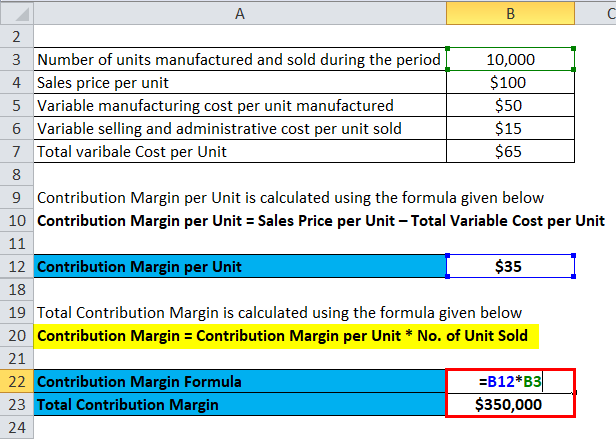
It can also be an invaluable tool for deciding which products may have the highest profitability, particularly when those products use equivalent resources. In general, the higher the contribution margin ratio, the better, with negative numbers indicating a loss on every unit produced. For the month of April, sales from the Blue Jay Model contributed \(\$36,000\) toward fixed costs. Looking at contribution margin in total allows managers to evaluate whether a particular product is profitable and how the sales revenue from that product contributes to the overall profitability of the company. In fact, we can create a specialized income statement called a contribution margin income statement to determine how changes in sales volume impact the bottom line.
What Are Fixed Costs?
The Contribution Margin Calculator is an online tool that allows you to calculate contribution margin. You can use the contribution margin calculator using either actual units sold or the projected units to be sold. This means Dobson books company would either have to reduce its fixed expenses by $30,000. On the other hand, net sales revenue refers to the total receipts from the sale of goods and services after deducting sales return and allowances.
Uses of Contribution Margin

A contribution margin ratio of 40% means that 40% of the revenue earned by Company X is available for the recovery of fixed costs and to contribute to profit. However, ink pen production will be impossible without the manufacturing machine which comes at a fixed cost of $10,000. This cost of the machine represents accounting explained with brief history and modern job requirements a fixed cost (and not a variable cost) as its charges do not increase based on the units produced. Such fixed costs are not considered in the contribution margin calculations. The contribution margin is different from the gross profit margin, the difference between sales revenue and the cost of goods sold.
Step 1 of 3
Contribution margin calculation is one of the important methods to evaluate, manage, and plan your company’s profitability. Further, the contribution margin formula provides results that help you in taking short-term decisions. As a business owner, you need to understand certain fundamental financial ratios to manage your business efficiently.
Assume that League Recreation, Inc, a sports equipment manufacturing company, has total annual sales and service revenue of $2,680,000 for all of its sports products. The break even point (BEP) is the number of units at which total revenue (selling price per unit) equals total cost (fixed costs + variable cost). If the selling price per unit is more than the variable cost, it will be a profitable venture otherwise it will result in loss.
Step 3 of 3
Fixed costs are business costs that stay the same, no matter how many of your products or services you end up producing. Fixed costs are independent of the business operations and cannot be avoided. There are a number of different metrics people use to measure a business’s profitability. This measures the total amount by which your revenue from sales exceeds your overhead costs. The contribution margin may also be expressed as fixed costs plus the amount of profit. It is the monetary value that each hour worked on a machine contributes to paying fixed costs.
The higher your company’s ratio result, the more money it has available to cover the company’s fixed costs or overhead. The variable costs equal $6 because the company pays $4 to manufacture each unit and $2 for the labor to create the unit. Other financial metrics related to the Contribution Margin Ratio include the gross margin ratio, operating margin ratio, and net profit margin ratio. These ratios provide insight into the overall profitability of a business from different perspectives.
- For variable costs, the company pays $4 to manufacture each unit and $2 labor per unit.
- It could also help you figure out how to structure sales commissions.
- Thus, CM is the variable expense plus profit which will incur if any activity takes place over and above BEP.
- This makes it very clear which product to keep and which to get rid of.
One of the important pieces of this break-even analysis is the contribution margin, also called dollar contribution per unit. Analysts calculate the contribution margin by first finding the variable cost per unit sold and subtracting it from the selling price per unit. The contribution margin ratio takes the analysis a step further to show the percentage of each unit sale that contributes to covering the company’s variable costs and profit.
This allocation of fixed overhead isn’t done for internal analysis of contribution margin. To cover the company’s fixed cost, this portion of the revenue is available. After all fixed costs have been covered, this provides an operating profit. In general, the higher the contribution margin ratio, the better. But what is considered “good” largely can depend on your industry.







